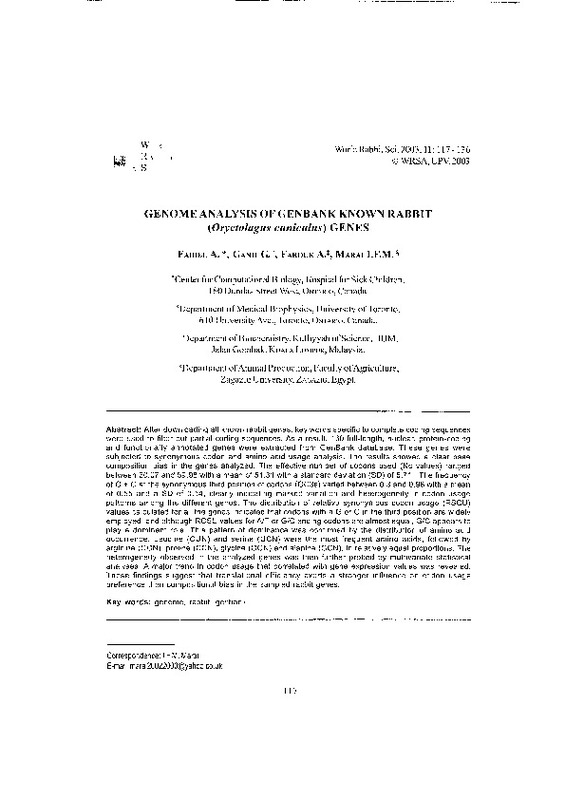JavaScript is disabled for your browser. Some features of this site may not work without it.
Buscar en RiuNet
Listar
Mi cuenta
Estadísticas
Ayuda RiuNet
Admin. UPV
GENOME ANALYSIS OF GENBANK KNOWN RABBIT (Oryctolagus cuniculus) GENES
Mostrar el registro completo del ítem
Fadiel, A.; Ganji, G.; Farouk, A.; Marai, F. (2003). GENOME ANALYSIS OF GENBANK KNOWN RABBIT (Oryctolagus cuniculus) GENES. World Rabbit Science. 11(3):117-136. https://doi.org/10.4995/wrs.2003.502
Por favor, use este identificador para citar o enlazar este ítem: http://hdl.handle.net/10251/9939
Ficheros en el ítem
Metadatos del ítem
| Título: | GENOME ANALYSIS OF GENBANK KNOWN RABBIT (Oryctolagus cuniculus) GENES | |
| Autor: | Fadiel, A. Ganji, G. Farouk, A. Marai, F.M. | |
| Fecha difusión: |
|
|
| Resumen: |
[EN] After downloading all known rabbit genes, key words specific to complete coding sequences were used to filter out partial coding sequences. As a result, 160 full-length, nuclear, protein-coding and functionally annotated ...[+]
|
|
| Palabras clave: |
|
|
| Derechos de uso: | Reserva de todos los derechos | |
| Fuente: |
|
|
| DOI: |
|
|
| Editorial: |
|
|
| Versión del editor: | https://doi.org/10.4995/wrs.2003.502 | |
| Tipo: |
|








